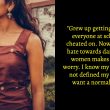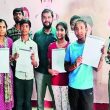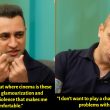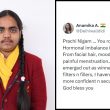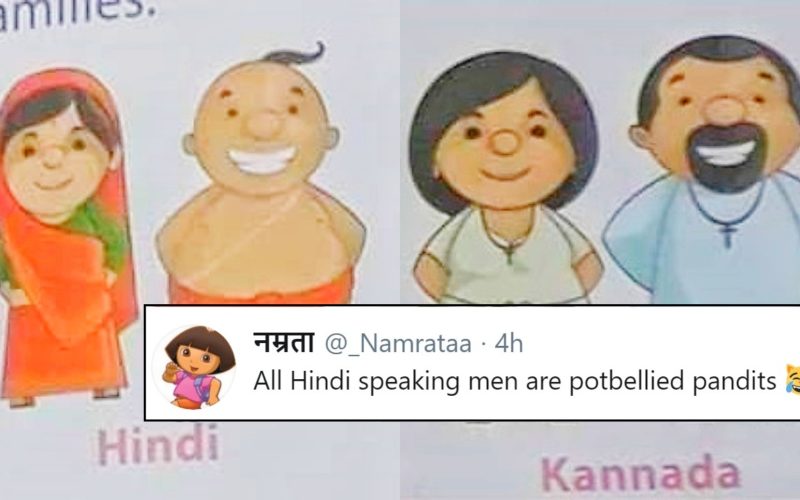When we generalise and categorise people on the basis of appearance while listing cultures, we unknowingly dictate how people from specific cultures should look like. In the process, we leave out a significant section of people who look differently. It is then when a dichotomy between the ‘self’ and the ‘other’ is established in the minds of people.
A brilliant example of this is a tweet that has been going viral on the internet. A woman went on to post a picture of a textbook showing representations of people belonging to different Indian cultures. These representations are, to a great extent, inaccurate.
So this is how a native Kannada people look in Karnataka. This is what kids are taught!
It's appalling! pic.twitter.com/NqztN61yPr— Sahana Rao (@spicy_words) February 24, 2020
The chapter in the textbook talks about the various languages in India. Above the name of the language is a picture of a couple representing people who speak that language. A Hindi-speaking couple is represented as one wearing a saree (woman) and the other (man) being topless, wearing a dhoti, and having a ‘sikha’ (small lock of hair at the back of a shaven head).
On the other hand, the Telegu-speaking couple is represented as dark-skinned and the Kannada-speaking is represented as Christian where the woman is wearing a dress and the man is seen in a priest’s robe.
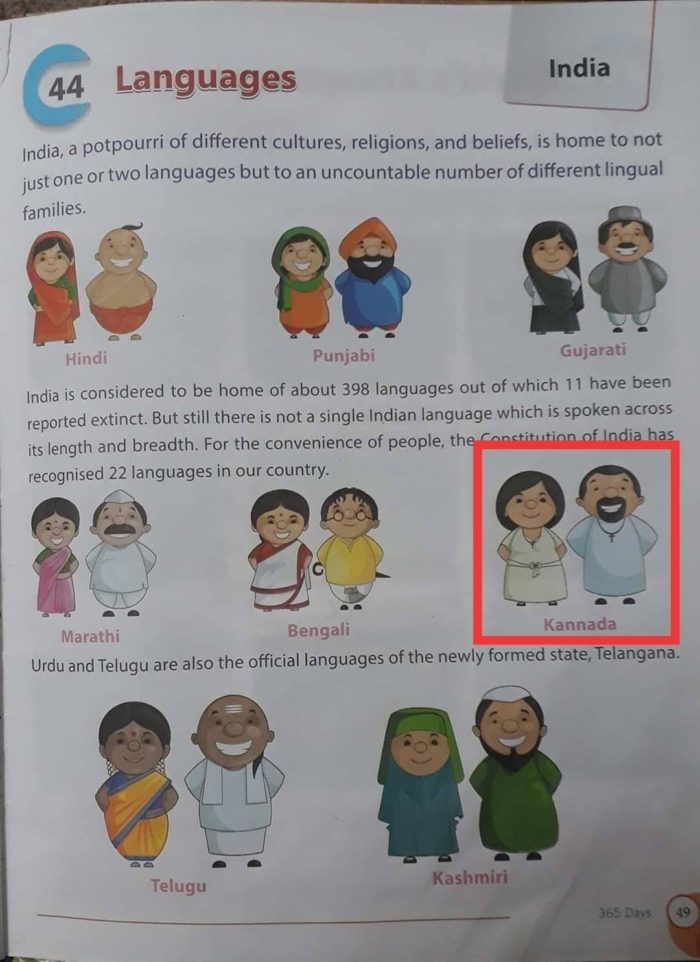
While it isn’t clear as to which textbook this is or which education board it belongs to, the thing that’s clear is that the chapter unhealthily stereotypes various cultures.
Which is why people on the internet are calling out the cultural misinterpretations. They also pointed out that teaching little kids such things is harmful. Have a look:
Why the do state boards/ edu. deptts/cbse allow such nonsensical drivel! https://t.co/tJWYfZUDub
— #IndiaWithForces (@shankssankaran) February 25, 2020
All Hindi speaking men are potbellied pandits 😹 https://t.co/VmdvaYhP0M
— नम्रता (@_Namrataa) February 25, 2020
Hindi, Punjabi, Gujarati and Kannada ladies have no bindi. Kannada uncle-aunty look like Parsis. Whoever designed this needs to expand their networks. https://t.co/OuU1iqCOsH
— नेहा श्रीवास्तव (Nehā S) (@neha_aks) February 25, 2020
Who the hell dresses like that!? Not even Christians dress like that.
— vakibs (@vakibs) February 24, 2020
why is bengali guy not smiling?
— Ashish Vyas (@ashivyas) February 24, 2020
Why are hindi and telugu men depicted with kudumi? Kannada representation looks more Roman.
— ramanathkrishnan 🇮🇳 (@ramanathkrish66) February 25, 2020
And Kashmiri as only Muslims 😕
— 𑆮𑆴𑆮𑆼𑆑 𑆑𑆼𑆩𑆫𑆮𑇅𑆤𑆵 🍁 (@zeroBYEzero) February 25, 2020
Why are telugu people so dark there..
— 🦁🇮🇳 (@iamnone108) February 24, 2020
Education needs jock reforms in India
— AB.. (@pathbreaker09) February 25, 2020
https://twitter.com/shivaprakashna/status/1232181645253410817
Not all Hindi-speaking people are potbellied, dhoti-wearing pandits, nor are all Kashmiri-speaking people Muslims. It is a shame how kids are being conditioned into believing such stereotypes.
